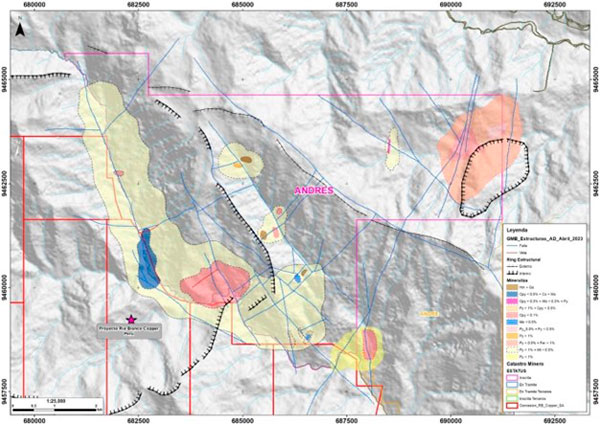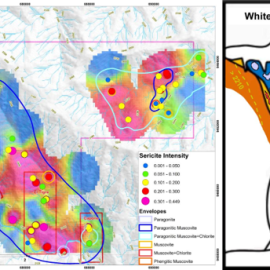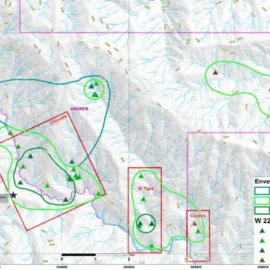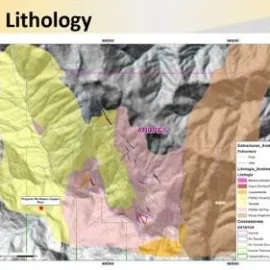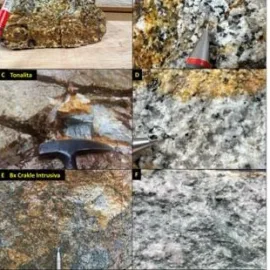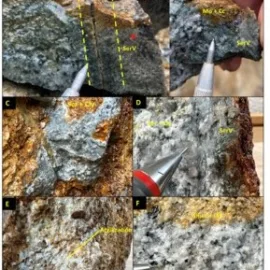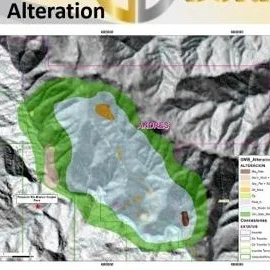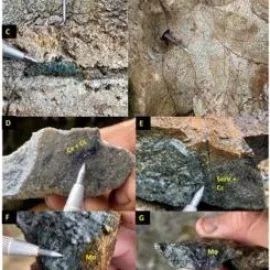Zamora Chinchipe Chinchipe 4.249 hectares Exploration The mineralization in the project has been defined as a distal–>proximal zoning: magnetite-pyrite–>pyrite>chalcopyrite–>chalcopyrite-pyrite–>chalcopyrite-chalcocite-molybdenite. The presence of magnetite was also noted in areas rich in Cu-Mo. This is from a zoning perspective observed in the influence area of the Río Blanco porphyry – Peru. On the other hand, the predominance of mineralization in the Ecuadorian part is divided into: (a) pyrite-molybdenite-specularite-(chalcopyrite) → external/superior phyllic zones (white sericite>green sericite) in rocks and breccias, and (b) Cu-Mo-rich minerals in sectors associated with internal/lower phyllic alteration (green sericite>white sericite). Field evidence and geochemical interpretations have allowed the location of three targets according to porphyry deposit models, based on alteration patterns (Sillitoe, 2010) and geochemical associations (Halley et al., 2015). The target nearest to a mineralized porphyry center is “Chicuate.” On the other hand, the targets “Capone” and “El Tigre,” given their medium to high erosion level, respectively, show low anomalies in Cu but an increase in Mo (Capone) and Au (El Tigre). In the latter, the presence of several types of breccias at the phyllic/argillic level with an affinity for Au (up to 1.996 g/T, extension of 60-80 m) leaves open the possibility of discovering hot mineralized centers at depth. REGIME
LARGE-SCALE MINING
location
PROVINCE
JURISDICTION
AREA
PHASE
